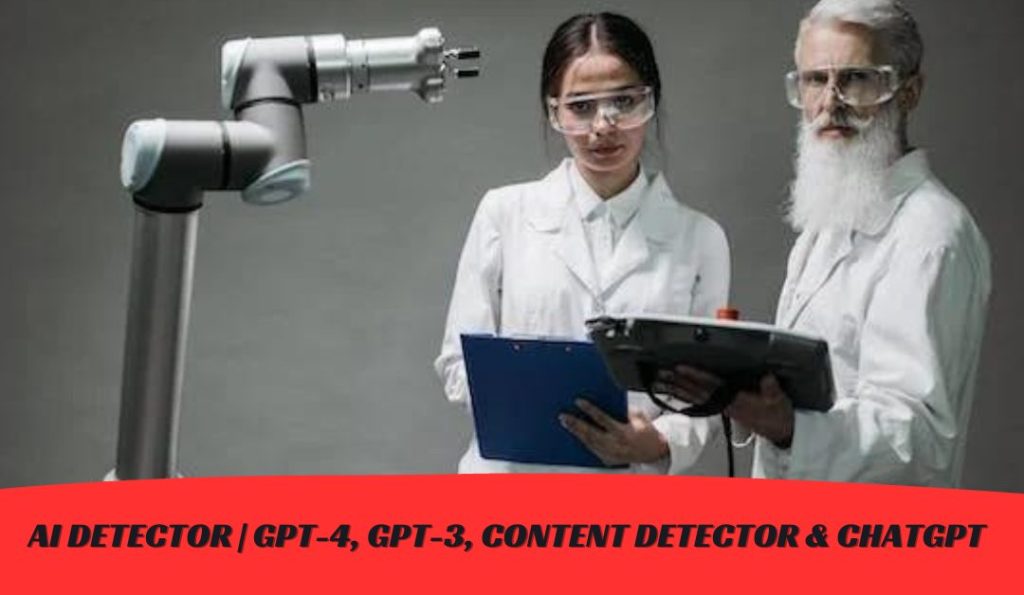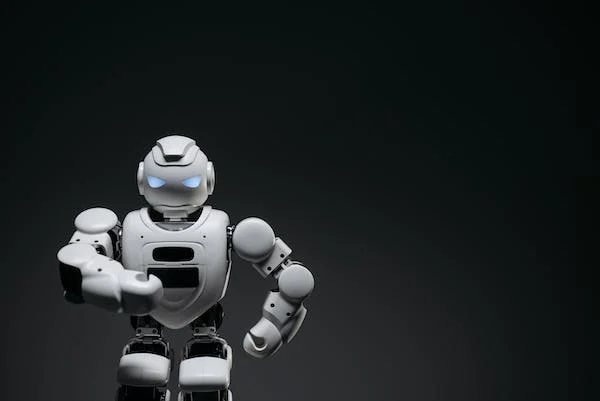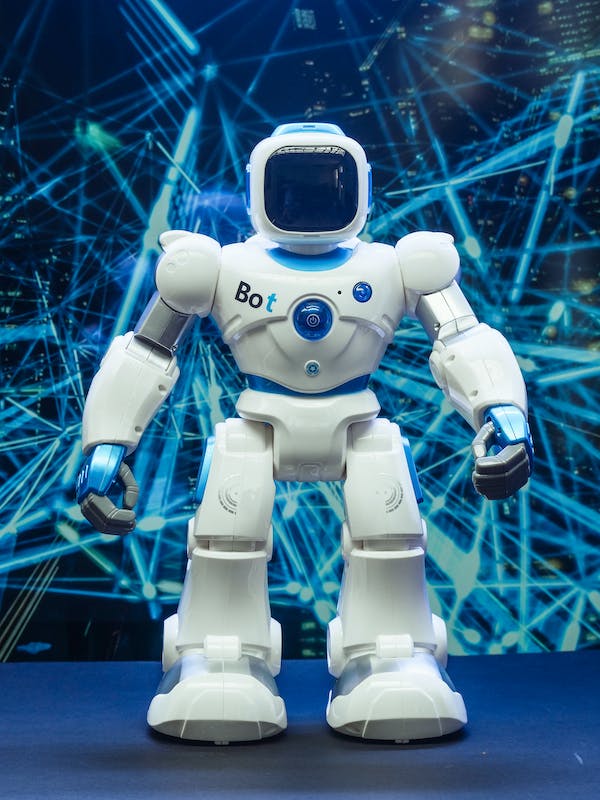AI Detector | GPT-4, GPT-3, Content Detector & ChatGPT
Words: 0
Characters: 0
Reading Level:
Sentences: 0
Paragraphs: 0
Estimated Reading Time: 0
Estimated Speaking Time: 0
AI-Written Probability: 0%
Sentiment Score: 0
AI Detector | GPT-4, GPT-3, Content Detector & ChatGPT

AI detector and Artificial Intelligence (AI) has emerged as an important force in the rapidly advancing technology landscape, particularly in the realm of detection systems, as a serious force that can transform how we do business. AI detectors and ChaTGPT have played an important role in augmenting traditional methods of detection in a variety of industries by offering unprecedented accuracy, efficiency, and versatility. Numerous aspects of AI detectors need to be considered in this overview, and we explore their evolution, applications, opportunities, challenges, and future trends along with their evolution.
The role of artificial intelligence in detection technologies needs to be understood:
As AI is becoming more integrated across detection technologies, ranging from healthcare to security, there has been a fundamental change in how these technologies work. AI serves as a cognitive powerhouse with the capacity to analyze vast datasets, identify patterns, and make intelligent decisions in real-time based on the analysis of these datasets. Its ability to mimic human cognitive functions allows it to raise the performance of AI detectors systems to a higher level than ever before Youtube Contents can check its app.
Related: AI Detector
How AI Detector and GPT-4, GPT-3 Enhances Detection Capabilities

By using AI, detection capabilities can be enhanced through the use of advanced algorithms that continually learn and adapt to new situations. AI detectors are characterized by a large number of machine learning models, which provide systems with the capability of recognizing intricate patterns, anomalies, and trends in data. With such dynamic adaptability, the capability of the system to adapt to complex situations is improved, and improved accuracy is attained.
Applications of AI Detector and GPT-4 in Various Industries
It is widely acknowledged that AI detectors have a broad impact across diverse industries, including fields like healthcare, security, finance, manufacturing, and many more. When it comes to healthcare, AI has the potential to help with diagnostics and personalized medicine. In contrast, in security, the technology has the potential to empower surveillance systems to identify potential threats as early as possible. Adaptability is the key factor that makes AI and ChatGPT detectors so valuable across a variety of sectors due to their versatility.
Evolution of AI and GPT Detection System
The evolution of detection systems shows a transition from traditional methods to solutions that are powered by artificial intelligence (AI). In contrast to traditional methods based on predetermined rules and fixed algorithms, AI detectors and ChaTGPT rely on machine learning to continually evolve, learning from new data and improving over time according to the data.
Traditional Methods vs. AI-Powered Systems
When traditional methods are compared with AI-powered systems, it is evident that static approaches are limited by their inherent limitations. It is now clear that artificial intelligence detectors offer dynamic, adaptive solutions that outperform their traditional counterparts when it comes to accuracy AI detectors and ChaTGPT.
Related: AI Detector
Advancements in AI Detection Algorithms
With the advancement of detection algorithms, the field of AI detection continues to evolve rapidly. Deep learning is a subset of machine learning that has proven to be particularly influential in the past few years. In addition to recognizing intricate patterns, these algorithms, inspired by neural networks, allow AI detectors and ChaTGPT to excel in tasks that are complex because they know how to recognize intricate patterns.
Related: AI Detector
Key Components of an AI Detector
An AI detector is made up of a number of different components, such as sensors for collecting data, machine learning models for analyzing it, and real-time processing capabilities. With these three components working in synergy, AI detectors and ChaTGPT can provide actionable insights in a timely manner as a result of their synergy.

Related: AI Detector
Sensors and Data Input
The quality of the data input is one of the most critical factors when it comes to AI detectors. A high-quality sensor is capable of capturing relevant information, which in turn ensures the accuracy of the analysis. As a result of the integration of diverse sensors, the scope of detection capabilities can be expanded substantially.
The following are some examples of machine learning models
As part of the AI detectors and ChaTGPT, machine learning models are at the core, allowing them to learn from data patterns, adapt to new information, and improve performance over time as they gather more data. A number of sophisticated algorithms and neural networks are used to develop these models, including decision trees and neural networks.
- Real-time Processing: A key distinguishing feature of AI detectors is their real-time processing, which allows them to analyze data in real-time and provide instantaneous results as a result. This capability must be available in time-sensitive applications, such as security and healthcare.
- Benefits of Implementing AI Detection: A multitude of benefits can be derived from the implementation of artificial intelligence detectors, including increased accuracy, enhanced efficiency, and reduced costs. As a result of these advantages, AI detectors have become an indispensable part of a number of industries.
- Increased Accuracy: The dynamic learning capabilities of AI detectors contribute to the increase in the accuracy of detection tasks due to their dynamic learning capabilities. A more reliable outcome can be achieved when the ability to recognize subtle patterns and anomalies is developed.
- Enhanced Efficiency: The use of AI detectors and ChaTGPT simplifies processes by automating complicated tasks, thus reducing the need for manual intervention in the process. It results in an increase in efficiency as well as an optimization of resources.
- Cost-Effectiveness: Despite the initial implementation costs that may exist for AI detectors, the long-term cost-effectiveness of AI detectors and ChaTGPT becomes evident through improved operational efficiency and a reduction in human error over the long term.
- Challenges and Limitations: However, AI detectors face many challenges and limitations in spite of the significant advancements in this field. Concerns regarding ethics, the potential bias of algorithms, and the necessity of careful customization are just a few areas that need to be addressed.
- Ethical Concerns: There are a number of ethical implications related to AI detectors and ChaTGPT, including those involving privacy, data security, and the responsible use of technology. It is crucial for widespread acceptance of innovations to strike a balance between innovation and ethical considerations in order to achieve this.
Algorithms based on artificial intelligence may be biased in the following ways
It has been found that AI detectors are susceptible to bias if they are trained on datasets that reflect societal prejudices. For fair and just outcomes to be achieved in various applications, bias must be recognized and mitigated.
Here are some examples of how this can be applied in real life
A significant amount of progress has been made in AI detection in real-world applications. The use of AI in healthcare has led to the detection of diseases at an early stage, while the use of AI in security and surveillance systems has led to the detection of suspicious activity. Based on these examples, we are able to see the tangible impact that AI detectors have on improving outcomes in a number of scenarios.
Detection of AI in the healthcare industry
In the healthcare sector, AI detectors and ChaTGPTare revolutionizing diagnostics by analyzing medical images, identifying patterns that indicate disease, and facilitating individualized treatment plans based on these patterns. A medical decision-making process that incorporates artificial intelligence enhances the speed and accuracy of the process.
Security and Surveillance with Artificial Intelligence
In security and surveillance systems, artificial intelligence detectors are useful because they are capable of analyzing video feeds, recognizing patterns of behaviour, and identifying potential threats within those feeds. The proactive nature of AI enhances enhanced security measures.
The following are the future trends in AI detection
There are many exciting possibilities for the future of AI detection, including integrating it with the Internet of Things (IoT) and continuing to advance deep learning technologies.
Integration with IoT
In order to be able to collect and analyze data in a more efficient manner, AI detectors and ChaTGPT interact with IoT devices in a synergistic manner. Through the use of this integration, we are able to gain a more comprehensive understanding of the environments, leading to enhanced detection capabilities.
Related: AI Detector
In the field of deep learning, continued advancements have been made, including
AI detectors will be able to detect more things in the future with the advancements in deep learning techniques that have been made in recent years. We can expect even more sophisticated and accurate detection systems in the future as neural networks and training methodologies become more sophisticated and accurate.
How Businesses Can Utilize AI Detectors
AI detectors and ChaTGPT are capable of harnessing the power of businesses through customization for specific industries, comprehensive training, and the creation of effective implementation strategies.
Customization for Specific Industries
The effectiveness of AI detectors and ChaTGPT is maximized when they are customized to meet the specific requirements of specific industries. In order for the detectors to perform optimally, they must be customized to address the challenges specific to the industry.
Training and Implementation
The integration of artificial intelligence detectors requires comprehensive training of the machine learning models as well as seamless integration into existing systems in order to be successful. To ensure a successful deployment, businesses need to invest in the expertise that is required.
The Impact of AI Detectors on Everyday Life
With the widespread adoption of AI detectors, a significant change is taking place in everyday life, improving safety and security, streamlining processes, and fostering trust through increased transparency for youtube title generator.
Improving Safety and Security
With the help of artificial intelligence detectors, safer environments can be created by identifying potential risks in real-time AI detectors and ChaTGPT. The use of artificial intelligence, for instance, can enhance public safety through rapid threat detection in smart cities.
Streamlining Processes
As a result of automation facilitated by AI detectors in a variety of industries, from manufacturing to logistics, processes are becoming more efficient. This makes it possible for human workers to focus on more complex tasks in addition to improving efficiency.
Addressing Concerns and Building Trust
In order to foster trust in AI detectors and ChaTGPT , concerns related to ethics, bias, and transparency must be addressed in order to foster trust. To build confidence in the use of artificial intelligence, regular audits, updates, and clear communication about how it is being used are key.
Transparency in AI Systems
In order to maintain user trust in AI detectors, it is crucial to have transparent communication about how they work and what data they utilize. In order to alleviate concerns about algorithms, data sources, and decision-making processes, we need to be open about them.
Regular Audits and Updates
In order to ensure the continued accuracy of AI detectors over the long term, address biases that may emerge over some time, and incorporate the most current advances in detection technology, periodic audits and updates are necessary.
Conclusion
The AI detector represents a revolutionary leap in the field of detection technologies, reshaping industries and every aspect of our daily lives. They have been able to adapt, learn, and analyze data in real time, which has allowed them to take on increasingly critical roles in healthcare, security, and many other sectors. In the midst of the ever-changing landscape of AI detection, it is important to keep our eyes on.
